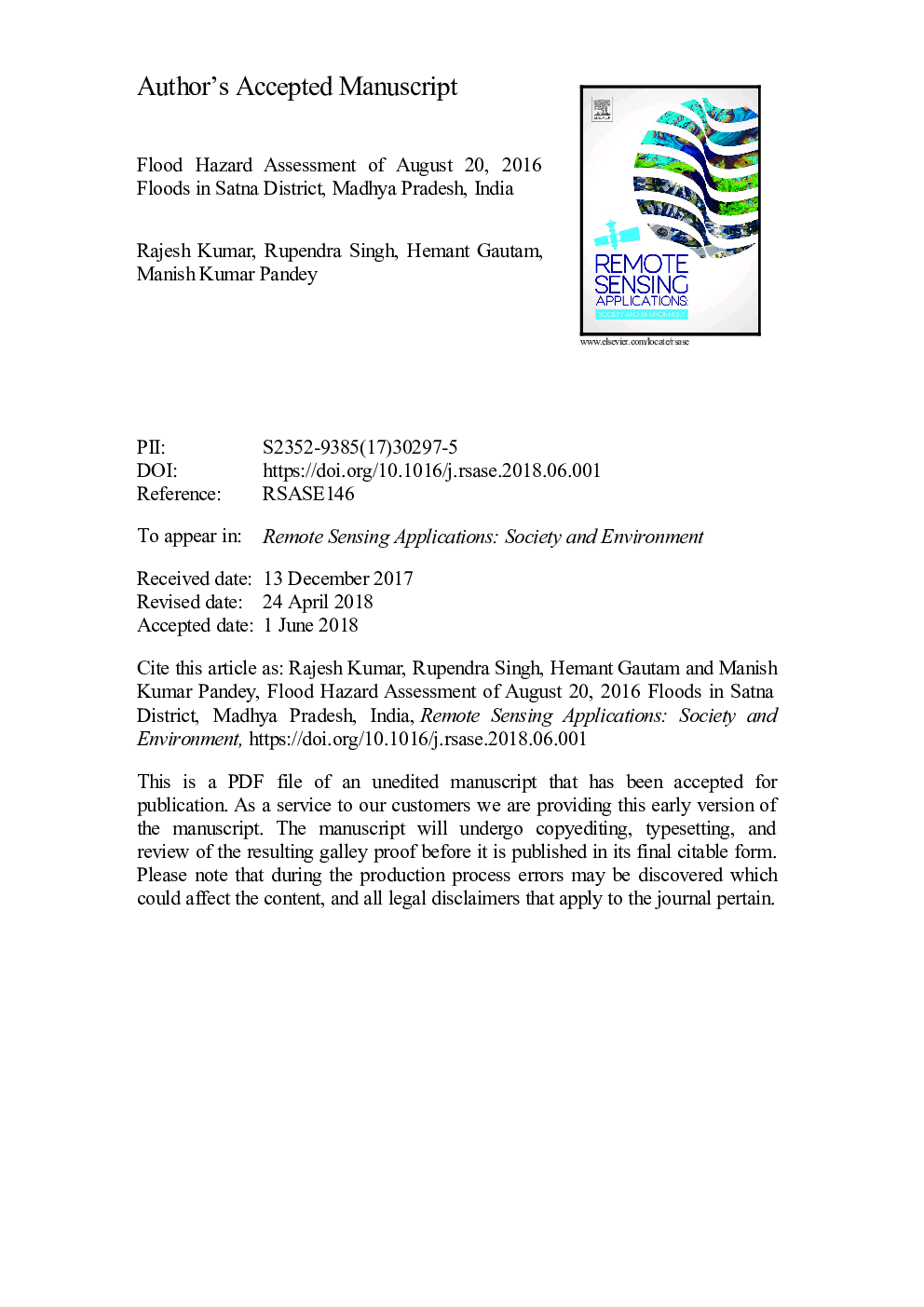| Article ID | Journal | Published Year | Pages | File Type |
|---|---|---|---|---|
| 8866306 | Remote Sensing Applications: Society and Environment | 2018 | 39 Pages |
Abstract
Floods are one of the most destructive and land sculpting phenomena around the globe and different aspects of them are being studied at different spatial and temporal scales. Magnitude and frequency of floods, the two important components in flood studies, have been studied with enhanced accuracy and quickness because of commencement and advancement in geospatial technology. Accentuation in the studies of floods and hazardous impacts thereof, at different temporal and spatial scales, have been achieved due to increased temporal and spatial resolution of remotely sensed satellite images. Advancement in computational power has also helped us to perform such analysis quickly. Even after such enhanced capabilities and facilities, flood studies at local levels (village or town) are not very common. Lack of such studies poses a serious challenge to hydrologists, climate scientists, geoscientists, planners and policy makers. The present work proceeds to achieve twofold objectives to ease the challenge faced: 1) to assess the flood hazard of August 20, 2016 flood event of Satna district of Madhya Pradesh at village/town level; and 2) to devise a flood hazard index (FHI) using linear combination of only two parameters i.e. flooded area and qualitative turbidity. The flooded areas have been derived from Landsat 8 OLI-TIRS image of August 20, 2016 using tasseled cap wetness index and modified normalised difference water index (MNDWI). The values of MNDWI have been taken as a proxy for qualitative turbidity. Association of FHI with flood-affected arable land and built-up area is positive and statistically significant at 0.01 level that justified the method of FHI computation. As compared to the four parameters-based FHI, devised by Kumar (2016), this study found that the FHI computed with only two parameters is also effective, easy to compute and this approach may be tested in other flood-affected parts of the globe.
Keywords
Related Topics
Physical Sciences and Engineering
Earth and Planetary Sciences
Computers in Earth Sciences
Authors
Rajesh Kumar, Rupendra Singh, Hemant Gautam, Manish Kumar Pandey,
